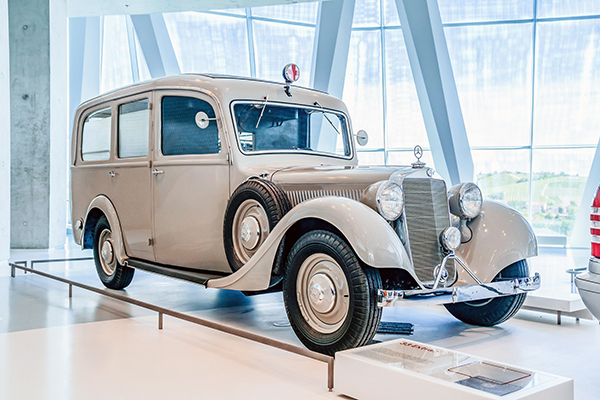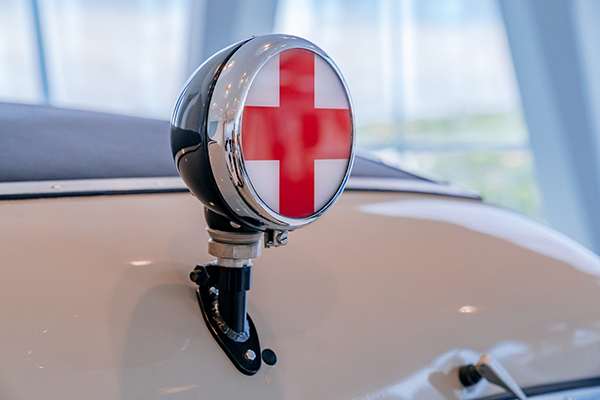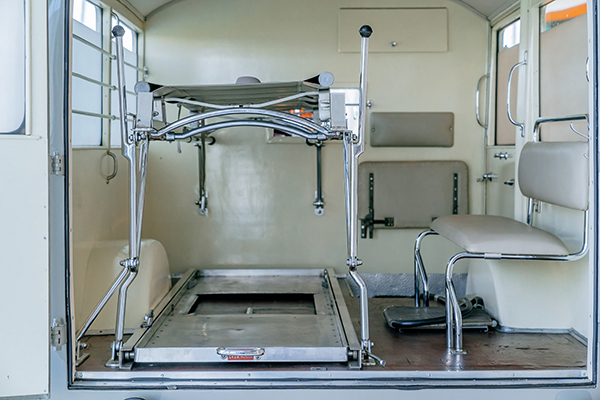Probably no other carmaker in the world is equally renowned for the quality of its luxury limousines, the sturdiness of its heavy-duty machines, and the superb performance on the track simultaneously. All wrapped in a low-profile, long-lasting tradition of making utilitarian vehicles.

Germany, however, pulled it off with the most famous of its automobile brands – we are, of course, talking about Mercedes-Benz. A continuous top contender for the “greatest carmaker” title, the manufacturer has a solid practice of producing less flamboyant but reliable and appreciated vehicles.
Light and heavy trucks and multipurpose vans are just as “Mercedesy” as the Silver Arrows, the AMG cruise missiles, or the Formula One championship-winning spaceships. The three-pointed star sits comfortably on the official motorcade limousines carrying heads of state as it does on the front grille of lowly, blue-collared utilitarians, like street food trucks, mail delivery vans, or ambulances.
The Germans might be the only ones to have reverse-engineered a luxury car and morphed it into mass-produced medical assistance van. In 1937, mind you, engine-powered ambulances were still in their infancy. Most purpose-built automobiles served as on-demand means of transport to hospitals or medical offices rather than first-aid providers.
Mercedes-Benz took a different approach: it started with the company’s new model – the Typ 320 from 1937, launched that same year – and modified it to serve as an ambulance. The car it was based on couldn’t be further apart (from a sales perspective) from this rather humble member of the Mercedes family.
The starting point for this project was the Mercedes 320, an automobile launched 85 years ago, in February 1937. Available in two wheelbase versions (the short 2.88-meter or the full-length 3.3-meter / 113 or 130 inches), the new automobile (code name W142) came in no less than eleven body styles.
Separately, an empty chassis could be purchased (to have a third-party coachbuilt body installed) in a long or short wheelbase. Sporting a new 3.2-liter engine with a single down-draft carburetor, capable of delivering 77 hp (78 PS) and 161 lb-ft (218 Nm) from the rhythmic punch of its six inline pistons, the platform was deemed the ideal candidate for the ambulance.

To give you an idea of what the Mercedes 320 was, please note this: the car offered a roadster, a hard-top convertible, an open-top touring, one luxury Pullman, two saloons, and five cabriolet body styles.
The automobile had great mechanics – appreciated not only by owners, drivers, auto journalists, or gearheads (who quickly fell for the car’s qualities) but also by a much more sharp-judging, keen-eyed umpire: the archrivals from Horsch. If the name doesn’t ring familiar, you might know them by their current persona: Audi.
At the time, Horsch was one of Mercedes’ most vigorous opponents in the auto market. Both paid close attention to what the adversary was doing. Horsch sales division bosses cut all the corners and went for the straightforward-most solution.
They bought a Mercedes-Benz Typ 320 DB Sports Cabriolet towards the end of 1937 and took a long, close, and scrutinous look at the vehicle from all angles. The conclusions were that the three-pointed-star 320 was an all-around mechanically better car than what Horsch was making at the time (the 930 V Sports Cabriolet).
The engine ran smoother and quieter, the gearbox was superior, the clutch was easier to operate, the windows could be rolled down completely, and the seats offered more comfort. The four-speed manual (with all forward gears synchronized) was sturdy enough to give the car a highway top speed of 81 mph (130 kph) – depending on the body style.
Yes, there was such a thing as highway speed in the 30s; Germany had been building them since 1933. Typ 320 also received much praise for its comfortable ride. The front independent suspension sat on a transversal leaf spring and featured hydraulic shocks and coil springs. At the opposite end, a dual-joint swing axle with twin coils on each side, one behind the other, spoiled the backseat passengers.
On the downside, the Mercedes was considered inferior regarding luggage and interior space, paint quality, and front visibility. The windshield consisted of two pieces of glass divided by a metal upright. Horsch considered it to be “too wide” (compared to their design).

The Mercedes-Benz Typ 320 was a fine automobile, even by bitter rivals’ standards. And yet, the three-star badge also adorned an unlikely family member – the ambulance. The van shared the extended frame and drivetrain with the limousines and luxury roadsters.
Those were the only things they had in common. The medical utilitarian made use of the “high-and-long” philosophy. Lueg, a long-time partner of Daimler-Benz, built the body for the ambulance, stretching the vehicle both horizontally and vertically.
The medical care compartment (which was heated) offered two ways of access – either through the rear double doors or from the right-rear side door. The Mercedes ambulance could transport two patients at the same time.
A bunked double-stretcher configuration could be quickly loaded or unloaded from the vehicle (the gallery perfectly displays the interior arrangement). However, while the medical response automobile offered seating for two people in the back (thanks to the bench and folding seat), there was very little in terms of lifesaving equipment.
Also, the van had no sirens and no emergency lights (“rotating beacons” and “two-tone horn” are the preferred jargon terms). Those two defining features of today’s ambulances would become industry standard two decades after the Typ 320 Mercedes was born.
Even so, it was a vast improvement over the day’s standards when the driver was also the paramedic. Naturally, while they were at the wheel, all they could do for the patient was to keep an eye on them (using the mirror). The presence of a dedicated attendant who could take care of the patients all the time was revolutionary.
It made an excellent impression on a musical instrument manufacturer (Hohner, from the German town of Trossingen), who acquired a Typ 320 Mercedes ambulance for its medical service needs. While the vehicle’s service record hasn’t saved something exciting, the retirement made it special. The limousine-derived ambulance now sits in the Mercedes-Benz Museum in Stuttgart, Germany.
Mercedes-Benz Typ 320 From Lifestyle Status Symbol To Lifesaving Utilitarian
05/02/2023
1 Comment
Mercedes-Benz | Mercedes-AMG
Click to rate this post
[Total: 1 Average: 5]
rolex daytona replica
Hey There. I found your blog using msn. This is a really well written article.I’ll be sure to bookmark it and come backto read more of your useful info. Thanks for the post. I’ll certainly comeback.